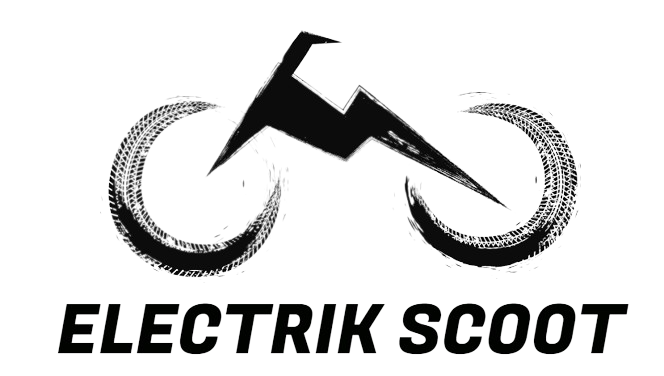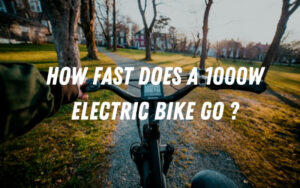Have you ever dreamt of riding your very own electric bike, whizzing through the streets with the wind in your hair and a smile on your face? If you're ready to turn that dream into reality, this guide is for you. In this step-by-step tutorial, we'll walk you through the process of creating an electric bike with a starter motor. From choosing the right components to assembling your bike, you'll gain the knowledge and confidence to embark on this exciting DIY adventure.
Table of Contents
How to make an Electric Bike with a starter motor?
Making an electric bike with a starter motor is not a complicated job. But if you don't know the process, you can follow the stepwise guide below to make one for your next ride!
2. Choose the Right Frame
Select a bicycle frame that suits your style and preferences. Make sure it's compatible with the starter motor kit and has enough space to accommodate the battery pack and other components.
3. Install the Starter Motor
Attach the starter motor to the frame following the manufacturer's instructions. Ensure it's securely mounted and aligned with the rear wheel.
4. Attach the Battery Pack
Position the battery pack on the frame, usually near the downtube or rear rack. Secure it tightly using brackets or straps. Connect the wiring to the motor controller.
5. Connect the Motor Controller
Mount the motor controller in a convenient location. Connect the wires from the motor, battery pack, throttle, and brake levers to the controller according to the provided diagram.
6. Install Throttle and Brake Levers
Attach the throttle to the handlebars for speed control. Connect the brake levers to the controller, which will cut off power when you engage the brakes.
7. Test the System
Double-check all connections and wiring. Turn on the system and test the motor, throttle, and brakes to ensure everything is functioning as expected.
8. Fine-Tune and Adjust
Take your bike for a test ride in a safe area. Pay attention to acceleration, braking, and overall performance. Make any necessary adjustments to achieve optimal performance.
9. Safety First
Always wear protective gear, including a helmet, when riding your electric bike. Obey traffic rules and regulations to ensure your safety and the safety of others.
Expert Tips for an Exceptional Electric Bike
Creating your own electric bike is a rewarding endeavor. Here are some expert tips to make the process smoother:
- Research thoroughly before purchasing components to ensure compatibility and quality.
- Consider the terrain you'll be riding on to choose the right motor power and battery capacity.
- Opt for a lithium-ion battery for its lightweight and long-lasting performance.
- Practice caution when working with electrical components, and if needed, seek professional assistance.
Things to Consider While Choosing the Parts for an Electric Bike
Using a regular bicycles starter motor into an e-bike is not tricky. However, some E-Bike transition components are required for this process. For example, for this entire procedure to take place, you must collect the following features.
Select a bicycle
The very first thing to do is to select an appropriate bicycle for motorization. It should be in a perfect state and a sturdy model, as it must hold between Ten and Fifteen kgs more than your bodyweight.
In addition, you must have full suspension and, most likely, elevated tires. Batteries with a pressure range of 35 to 65 psi will be the most effective. In addition, the bicycle must have enough room between the driver's legs, and a rear bicycle rack is required where you can easily place the batteries.
Select a starter motor
Starting your bicycle will require an electric starter motor with bike chains that is suitable for output shafts, as well as a cycling gear wheel. The most challenging element is obtaining it; However, it may be found, for instance, in motorbike auto shops. One with a power range of 250 to 350 watts will suffice. Check the armature, the commutator, drive lever, pinion, and brushes of the starter motor.
Get some batteries
If you want to make a remarkable electric bike, you need a good battery. Until you can get the other components, you must first determine the battery's power. People typically utilize a voltage ranging from 24 to 36 volts.
There should be at least one amp-hour of capability with every 1,6 km (1 mile) in a 36-volt circuit, along with connections to link all the things. Get an appropriate adapter for the battery as well. You might be able to get it at the same store.
Purchase a speed controller
The speed controller is equipped with a mind that controls the source of power that flows from the battery to the engine. The maximum voltage of the motor’s controller should meet the voltage requirements of an E-battery bike and motor.
If somehow the bike has a non-programmable controller, ensure that its wattage and energy level are compatible with the frequency and voltage of an electric motor. If the voltage of the electric motor is 36, the voltage of the controller should be the same too.
Purchase an accelerator
You need to buy an accelerator that features Hall Effect, which will assist you in adjusting the speed.
Note: If you are still having problems due to the chain's alignment, try adjusting it with the washers.
Can I use any type of bicycle frame for my electric bike?
Yes, you can use various types of bicycle frames as long as they can accommodate the starter motor, battery pack, and other components.
How fast can I expect my electric bike to go?
The speed of your electric bike depends on factors like the motor's power, battery capacity, and terrain. On average, electric bikes can reach speeds of 20-28 mph.
Do I need mechanical expertise to build an electric bike?
While some mechanical knowledge is helpful, many starter motor kits come with detailed instructions, making the assembly process accessible to DIY enthusiasts.
Can I ride my electric bike in the rain?
Most electric bikes are designed to withstand light rain, but it's advisable to avoid heavy downpours to prevent damage to electrical components.
How far can I travel on a single battery charge?
The range of your electric bike depends on factors such as battery capacity, motor efficiency, and your riding style. On average, electric bikes can travel 20-50 miles on a single charge.
Is it legal to ride an electric bike on public roads?
Laws regarding electric bike usage vary by location. In many places, electric bikes are classified as bicycles as long as they meet certain speed and power limits. Check your local regulations before hitting the road.
Conclusion
Crafting your own electric bike with a starter motor is a thrilling journey that combines innovation, engineering, and the joy of riding. By following the steps outlined in this guide and heeding expert advice, you'll be well on your way to creating a unique, eco-friendly mode of transportation that fits your needs and style. So, why wait? Start your electric bike-building adventure today!



